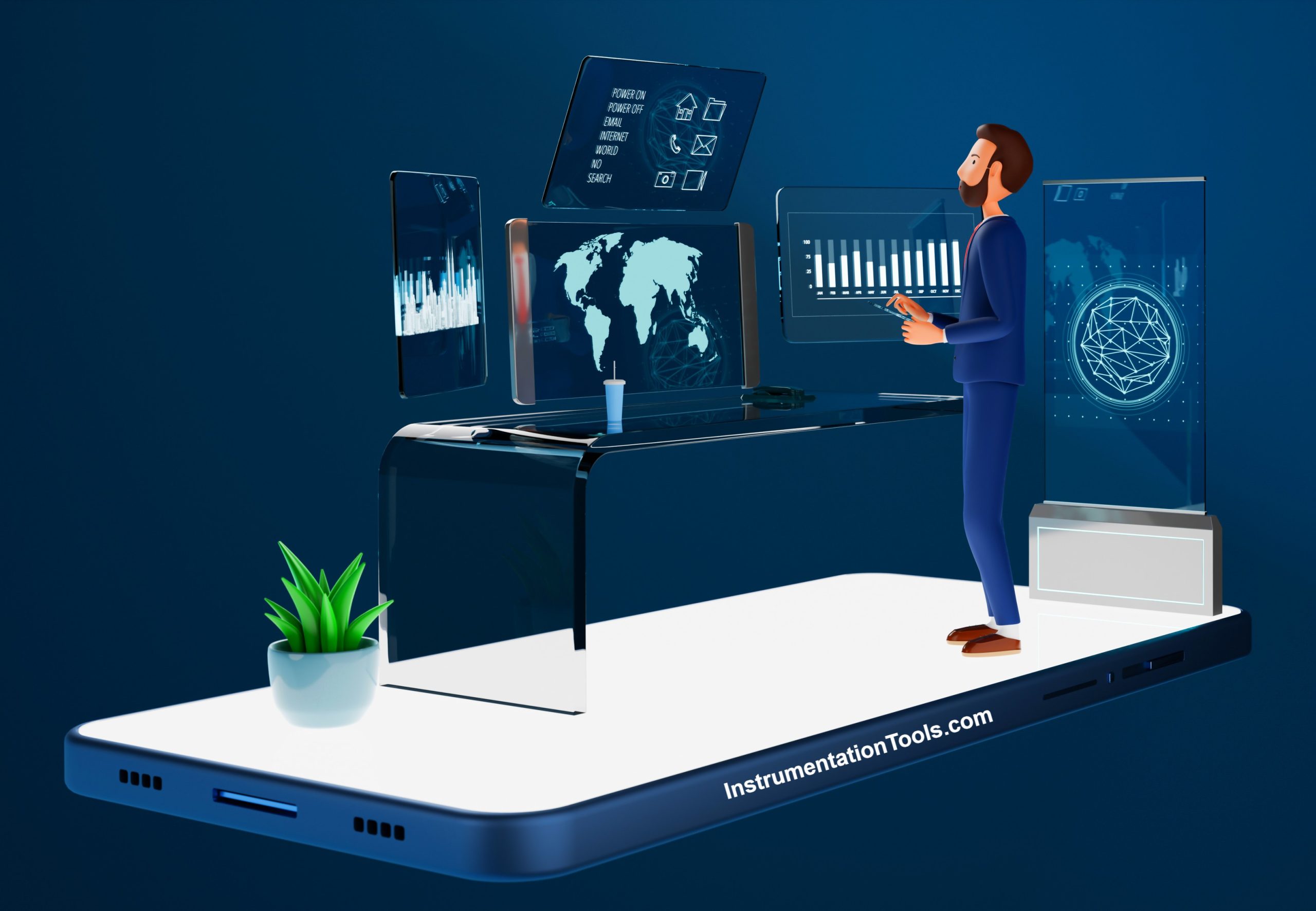In Industrial automation, most of the engineers are familiar with HMI. It is a separate graphical display that can be touched and operated. But it is mostly single-touch type. It means only the first touch will respond to the graphic display.
If someone’s touch is already active and when other touches happen simultaneously, then that second touch will not be responded to. For this, the first touch will have to be removed. So, to overcome this, an already existing and new technology called multi-touch has been started to be implemented in automation graphic devices too.
It is of a great advantage to use them due to it’s features. In this post, we will see the concept of multi-touch technology in industrial automation.
As the name implies, multi-touch means multiple users can touch the graphics at a time and operate them. The machine will respond to the touches and operate accordingly. This technology has already been used in mobiles, tablets, and other touchscreen devices.

But now it has started to be implemented in HMI’s. The two most obvious advantages are operating multiple buttons and the pinch-to-zoom factor. Suppose multiple popups appear on the HMI screen, and the user touches two of them at the same time, then they will operate accordingly.
Also, if the user wants to zoom in or out an object shown in HMI, then that too will work as more than one finger is used for this. Or, if a user has pressed a button and he wants the other user to operate something else, then that too is possible. Also, this technology eliminates the use of a mouse or keyboard for the want of multiple actions.
The main technique used for this technology is projected capacitive touch (PCT). It consists of an array of micro-fine conductive electrodes. They are printed in the X-Y axis. These electrodes are continuously oscillated at a fixed frequency.
When someone touches a point, the frequency at that point is modulated and this change in frequency determines touch position. The main advantage here is that if multiple touches occur, then the corresponding frequencies are different at their locations and this helps to understand where multiple touches have been done.
The most used conductor layer is ITO (indium tin oxide). One thing to note is that a change in frequency means an electrostatic field has been changed and this corresponds to the change in capacitance. Multiple boundaries and co-ordinates are calculated by the processor for each touch region and this helps in multipoint tracking for sensing the touches done.
Nowadays, almost all the young generation people know how to use touch devices. So, it is easier for them to operate multi-touch devices. This reduces the training time for owners and thus, reduces its cost.
As multiple touches can be done, it automatically reduces the number of screens and actions required in writing a display program. Programming size is thus reduced to a great extent.
As discussed earlier, the use of external devices like mouse and keyboard gets eliminated due to the use of multi-touch devices. So, the operating cost automatically reduces due to this.
The pinch-to-zoom factor excites the users in operating the display. The users can get to experience a lavish operation in displays and it also looks aesthetic to operate them. This makes touch a very unique experience in this case.
Multi-touch screens are designed to operate in very high levels of environmental stress. This increases its life and also increases reliability. Also, they can be sensed with gloves or cotton. This makes it highly sensible to various types of touches.
In this way, we saw the concept of multi-touch technology in industrial automation.
If you liked this article, then please subscribe to our YouTube Channel for Instrumentation, Electrical, PLC, and SCADA video tutorials.
You can also follow us on Facebook and Twitter to receive daily updates.
Read Next:
In this post, we will learn the basic requirements for a network switch to be…
The PLC panel and MCC panel interface signals are start, stop, run feedback, trip, local…
In this article, we are going to discuss about shutter door control using induction motor…
Electrical Drives control the motion of electric motors. Motion control is required in industrial and…
PLC ladder logic design to control 3 motors with toggle switch and explain the program…
VFD simulator download: Master the online tool from the Yaskawa V1000 & programming software for…